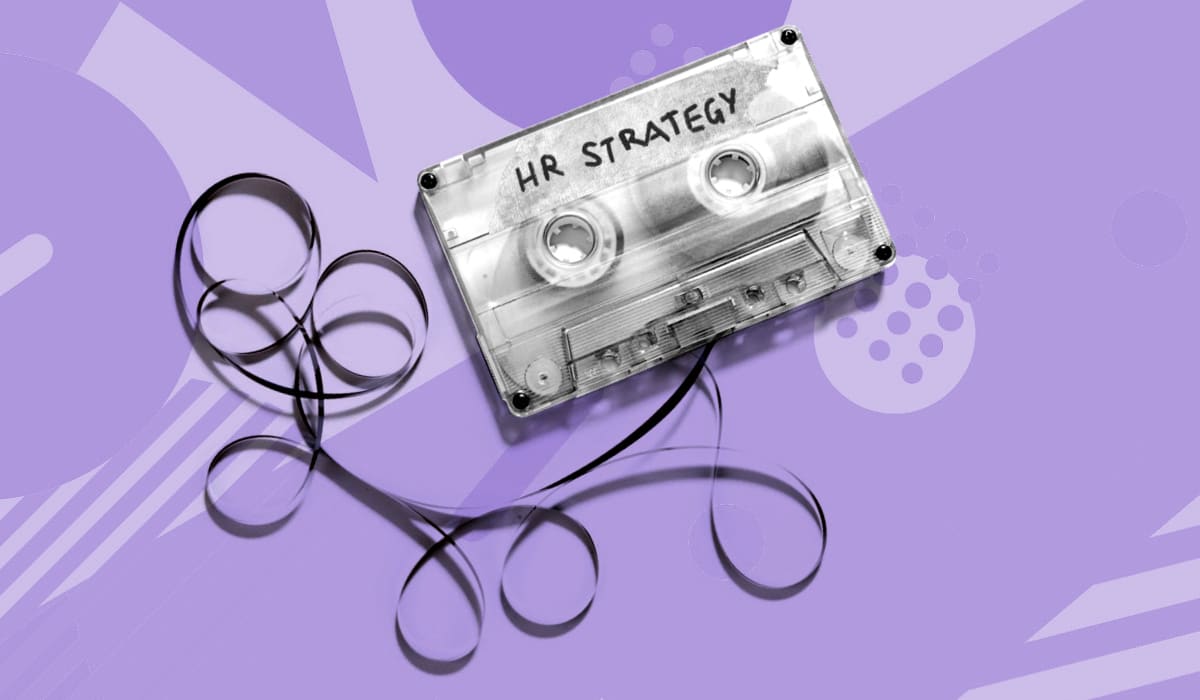Five Signs Your Company’s HR Strategy is Stuck in the 90s
Since the 90s, increased global competition and technology have changed the pace of business. For many, HR Strategy is stuck in the 90s.

Is “Serenity Now!” your mantra for combating workplace stress? Does the occasional setback prompt you to belt out the lyrics from a hit Chumbawamba song?
The occasional 90s pop culture reference will not impact your career, but a 90s-style business practice will.
Over the past two decades, increased global competition and technology advances have changed the pace of business, which has made workforce optimization more complex. Modern HR teams have become more nimble, data-driven and strategic.
Did your team get left behind in this shift? If your company is following any of the practices below, it may be time for an update.
1. HR is still referred to as “Personnel”
Back in the 90s, most companies did not call their people function HR. The discipline was called Personnel, and the role was firmly in the administration and policy camp. The personnel department had a strong focus on compliance, and employee engagement was a foreign concept.
2. You are supporting the pulp and paper industry with your transactions
The 90s was the decade of the transactional HR system. Products like PeopleSoft started to gain traction, which enabled HR to replace a lot of paper-based administration (such as manager changes, compensation changes, and time off requests) with more streamlined technology-supported processes.
We are now in the third wave of HRIS systems. Organizations are replacing hosted or homegrown systems with cloud-based solutions, which means many organizations are moving towards a self-service HR technology environment that requires little to no IT investment.
3. Your recognition program kicks in after five years of service
According to research by Bersin and Deloitte, tenure-based rewards systems — which are actually legacy programs from the early 1900s — are largely ineffective.
Indeed, the notion of a “job for life” disappeared during the 90s, when downsizing and offshore outsourcing trends changed the social contract between workers and employers. According to the Bureau of Labor Statistics, the median tenure for 25-34 year-olds in 2012 was 3.2 years, and the median tenure for all workers was 4.2 years.
We now work with a generation of highly mobile employees who see their jobs and their career as something to manage themselves, and recognition programs need to reflect this trend.
4. You have never hired someone through a social network
The seeds for a social revolution in recruiting were sown in 2003, when Reid Hoffman co-founded LinkedIn from his living room. Three years later, LinkedIn became the “go-to profile of record for online resumes” (according to the company’s 10-year anniversary timeline) and the company added the Recommendations feature — a major boon for job seekers and recruiters.
Social media sites like LinkedIn and Facebook are staples for recruiters today. Major companies like Pepsi, Gap, and Oracle are now investing in sophisticated social recruiting software — a clear sign that social recruiting is not a passing fad.
5. Your team makes decisions based on gut reactions to business demands
HR has traditionally been dominated by soft skills. In 1990, MIT lecturer Peter Senge introduced the idea of developing three core learning capabilities (fostering aspiration, developing reflective conversation, and understanding complexity) with his book, The Fifth Discipline: The Art and Practice of the Learning Organization. These ideas took root within HR as a way of fostering “the learning organization.”
But in the era of Big Data, it is not enough for HR professionals to only master soft skills. Increasingly, HR is being asked for hard numbers and analysis their HRIS cannot provide, leaving many professionals with a skills gap. Knowledge about the workforce is typically limited to isolated metrics, intuition or anecdote: According to the Aberdeen Group, 35 percent of enterprises lack visibility into the workforce skills required to support future business strategy.
I’m not saying that HR should abandon soft skills. On the contrary, empathy and communication continue to be important qualities that every talent professional should have. These traits, combined with the ability to make fact-based decisions, can be powerful ingredients for a successful career in a collaborative, data-driven world.
On the Outsmart blog, we write about workforce-related topics like what makes a good manager, how to reduce employee turnover, and reskilling employees. We also report on trending topics like ESG and EU CSRD requirements and preparing for a recession, and advise on HR best practices like how to create a strategic compensation strategy, metrics every CHRO should track, and connecting people data to business data. But if you really want to know the bread and butter of Visier, read our post about the benefits of people analytics.



